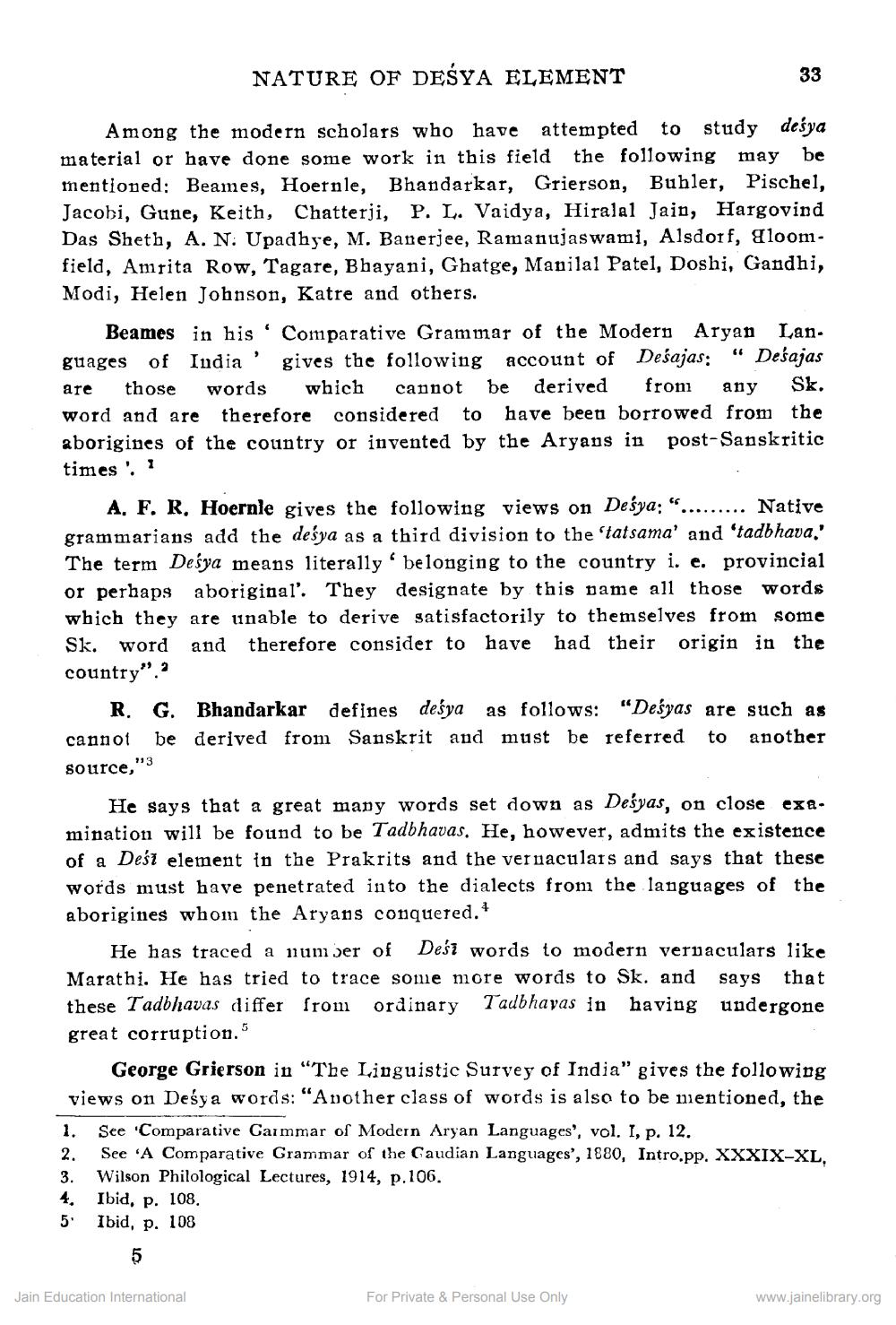________________
NATURE OF DEŚYA ELEMENT
33
Among the modern scholars who have attempted to study desya material or have done some work in this field the following may be mentioned: Beames, Hoernle, Bhandarkar, Grierson, Buhler, Pischel, Jacobi, Gune, Keith, Chatterji, P. L. Vaidya, Hiralal Jain, Hargovind Das Sheth, A. N. Upadhye, M. Banerjee, Ramanujaswami, Alsdorf, gloomfield, Amrita Row, Tagare, Bhayani, Ghatge, Manilal Patel, Doshi, Gandhi, Modi, Helen Johnson, Katre and others.
Beames in his Comparative Grammar of the Modern Aryan Lan. guages of India' gives the following account of Deśajas: " Deśajas are those words which cannot be derived from any Sk. word and are therefore considered to have been borrowed from the aborigines of the country or invented by the Aryans in post-Sanskritic times : 1
A, F. R. Hoernle gives the following views on Deśya: "......... Native grammarians add the deśya as a third division to the 'tatsama' and 'tadbhava.' The term Deśya means literally belonging to the country i. e. provincial or perhaps aboriginal'. They designate by this name all those words which they are unable to derive satisfactorily to themselves from some Sk. word and therefore consider to have had their origin in the country"..
R. G. Bhandarkar defines deśya as follows: "Deśyas are such as cannot be derived from Sanskrit and must be referred to another
source,"3
He says that a great many words set down as Deśyas, on close exa. mination will be found to be Tadbhavas. He, however, admits the existence of a Deśi element in the Prakrits and the vernaculars and says that these words must have penetrated into the dialects from the languages of the aborigines whom the Aryans conquered.
He has traced a number of Deść words to modern vernaculars like Marathi. He has tried to trace some more words to Sk. and says that these Tadbhavas differ from ordinary Tadbhayas in having undergone great corruption."
George Grierson in "The Linguistic Survey of India" gives the following views on Deśya words: “Another class of words is also to be mentioned, the 1. See "Comparative Carmmar of Modern Aryan Languages', vol. I, p. 12. 2. See 'A Comparative Grammar of the Gaudian Languages', 1880, Intro.pp. XXXIX-XL, 3. Wilson Philological Lectures, 1914, p.106. 4. Ibid, p. 108. 5. Ibid, p. 108
Jain Education International
For Private & Personal Use Only
www.jainelibrary.org




